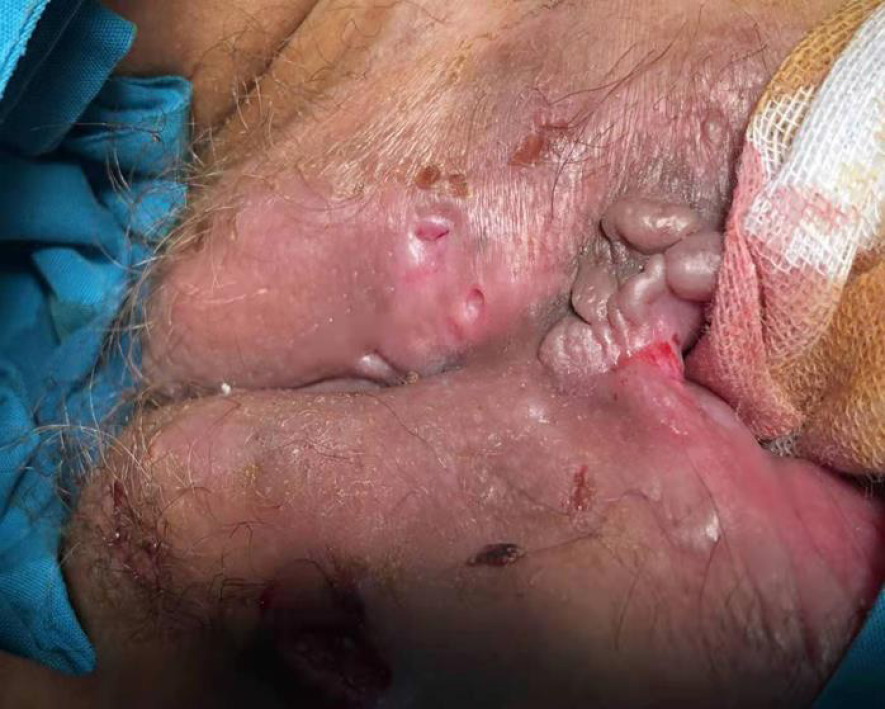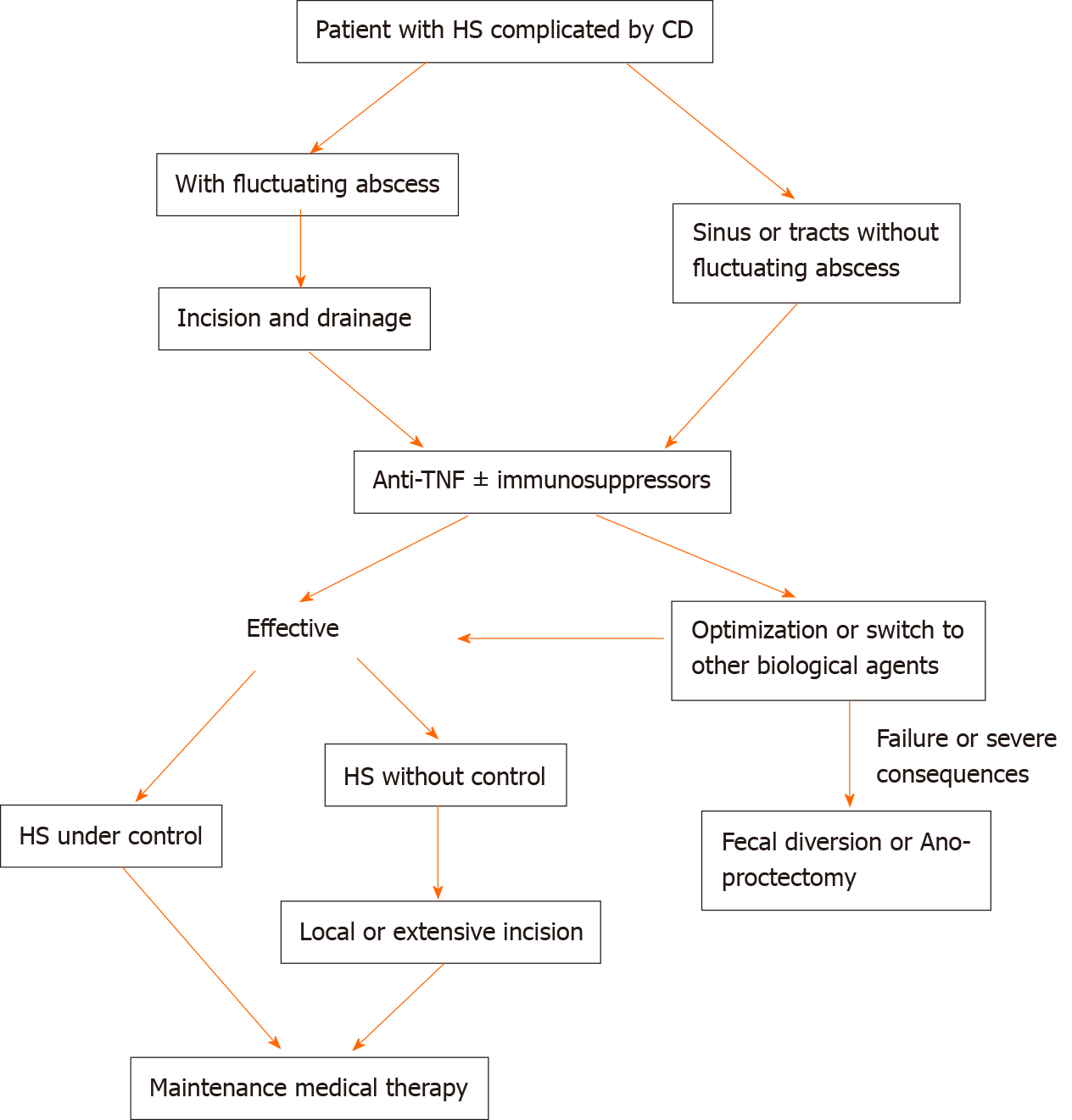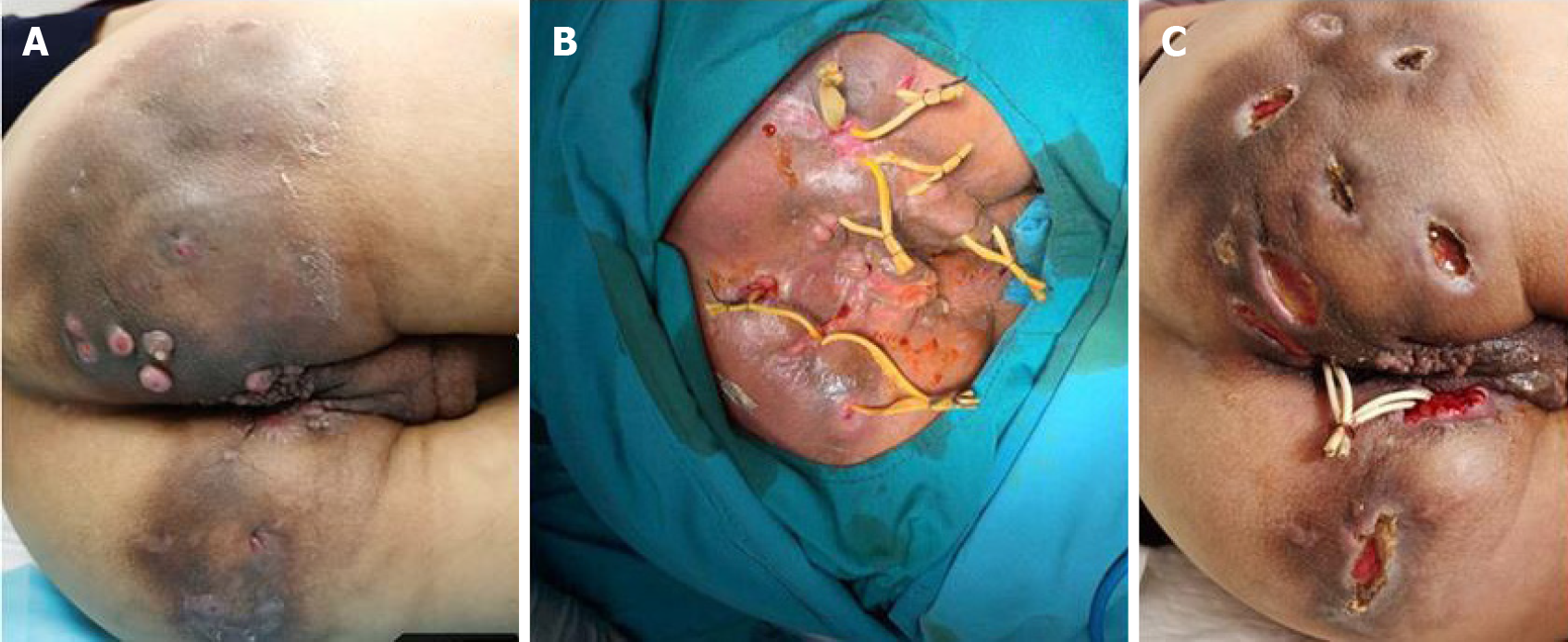Copyright
©The Author(s) 2021.
World J Clin Cases. May 26, 2021; 9(15): 3506-3516
Published online May 26, 2021. doi: 10.12998/wjcc.v9.i15.3506
Published online May 26, 2021. doi: 10.12998/wjcc.v9.i15.3506
Figure 1 Common immune mediated origins of hidradenitis suppurativa and Crohn’s disease.
DC: Dendritic cell; CD: Crohn’s disease; Th: T helper cell; IL: Interleukin; TNF: Tumor necrosis factor; TGF: Transforming growth factor; IFN: Interferon; HS: Hidradenitis suppurativa. Figure courtesy of Dr. Bo-Lin Yang.
Figure 2 A 40-year-old man with perianal Crohn’s disease and lumbar hidradenitis suppurativa, Hurley stage III.
Photo courtesy of Dr. Bo-Lin Yang.
Figure 3 A 16-year-old female patient with Crohn’s disease and perineal hidradenitis suppurativa, Hurley stage III.
Photo courtesy of Dr. Bo-Lin Yang.
Figure 4 Perianal hidradenitis suppurativa, Hurley stage III.
Extensive incision, marsupialization of wound surface, and secondary healing. Photo courtesy of Dr. Bo-Lin Yang.
Figure 5 Clinical strategy for hidradenitis suppurativa combined with Crohn’s disease.
CD: Crohn’s disease; TNF: Tumor necrosis factor; HS: Hidradenitis suppurativa. Figure courtesy of Dr. Bo-Lin Yang.
Figure 6 A 37-year-old man with Crohn's disease and hidradenitis suppurativa, Hurley stage III.
A: Prior to treatment, the patient had multiple draining sinus tracts, abscesses, and pustules in the perianal and buttocks area; B: Seton drainage; C: One month after the operation (infliximab treatment was performed twice during the period), the fistula secretion was significantly reduced. Photo courtesy of Dr. Bo-Lin Yang.
- Citation: Zhang M, Chen QD, Xu HX, Xu YM, Chen HJ, Yang BL. Association of hidradenitis suppurativa with Crohn’s disease. World J Clin Cases 2021; 9(15): 3506-3516
- URL: https://www.wjgnet.com/2307-8960/full/v9/i15/3506.htm
- DOI: https://dx.doi.org/10.12998/wjcc.v9.i15.3506














